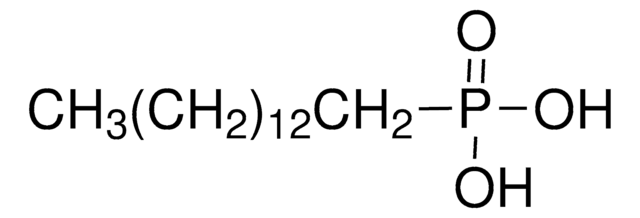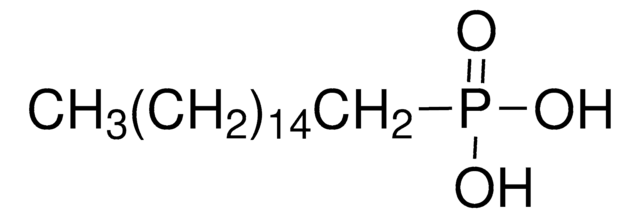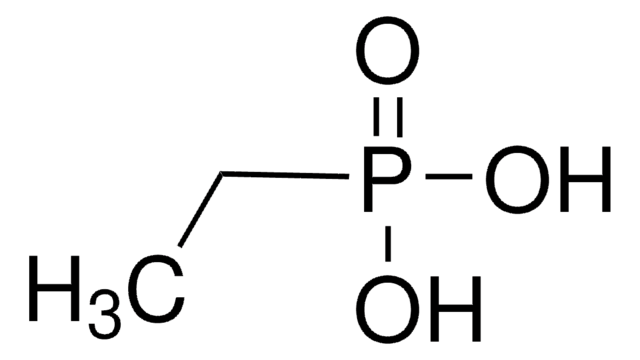737925
Decylphosphonic acid
97%
Sinónimos:
n-Decylphosphonic acid
About This Item
Productos recomendados
Nivel de calidad
Ensayo
97%
Formulario
solid
mp
96-101 °C
cadena SMILES
CCCCCCCCCCP(O)(O)=O
InChI
1S/C10H23O3P/c1-2-3-4-5-6-7-8-9-10-14(11,12)13/h2-10H2,1H3,(H2,11,12,13)
Clave InChI
DZQISOJKASMITI-UHFFFAOYSA-N
Descripción general
Aplicación
Palabra de señalización
Danger
Frases de peligro
Consejos de prudencia
Clasificaciones de peligro
Skin Corr. 1B
Riesgos supl.
Código de clase de almacenamiento
8A - Combustible corrosive hazardous materials
Clase de riesgo para el agua (WGK)
WGK 3
Punto de inflamabilidad (°F)
Not applicable
Punto de inflamabilidad (°C)
Not applicable
Elija entre una de las versiones más recientes:
Certificados de análisis (COA)
¿No ve la versión correcta?
Si necesita una versión concreta, puede buscar un certificado específico por el número de lote.
¿Ya tiene este producto?
Encuentre la documentación para los productos que ha comprado recientemente en la Biblioteca de documentos.
Los clientes también vieron
Artículos
There is widespread demand for thin, lightweight, and flexible electronic devices such as displays, sensors, actuators, and radio-frequency identification tags (RFIDs). Flexibility is necessary for scalability, portability, and mechanical robustness.
Nuestro equipo de científicos tiene experiencia en todas las áreas de investigación: Ciencias de la vida, Ciencia de los materiales, Síntesis química, Cromatografía, Analítica y muchas otras.
Póngase en contacto con el Servicio técnico













